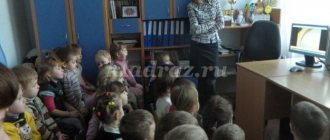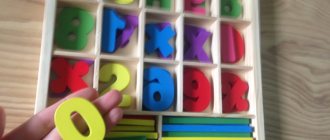Ways to dispose of waste
- Organization of landfills,
- recycling of waste,
- waste incineration.
Organizing landfills is the cheapest, but also short-sighted way to dispose of waste.
Toxic substances penetrate into underground waters, are dispersed by winds throughout the surrounding area and thereby cause damage to the environment.
As a result of rotting processes without air access, various gases are formed.
Fires regularly occur in landfills, releasing soot, phenol and other toxic substances into the atmosphere.
Recycling waste is the most resource-saving way. But there are a number of problems here:
- The first problem: the garbage needs to be sorted.
- The second problem: delivery of waste to the recycling site.
- The third problem: garbage cannot be used as a raw material for the production of high-quality products.
Incineration of waste is the most common and well-known method. BUT:
- Harmful or toxic chemical compounds are released in large quantities.
- not all garbage burns
- garbage contains a lot of moisture and difficult-to-burn materials.
We calculated the amount of garbage in our family:
| Amount of garbage per day | 500 g |
| Amount of garbage per month | –15kg |
| Amount of garbage per year | 180 kg |
| Amount of garbage per year per family member | 45 kg |
| Amount of garbage in the village, residents 870 people (year) | 39 tons 150 kg |
Project "Waste Recycling"
Interesting (and not so interesting) facts about garbage and recycling:
- Only 4% of garbage in Russia is sent for recycling.
- Every year, people produce so much garbage that if it were packed into trucks, they could be lined up on a road half the distance from the Earth to the Moon.
- One discarded tin can takes as much energy to recycle as half a can of gasoline produces.
- Reusing aluminum soda cans can save 96% of the energy used to make metal containers from ore. Moreover, recycling cans will reduce air pollution by 95% and water pollution by 97%.
- Recycling cans requires 90% less energy than making new ones.
What we need:
- 1-5 items of household waste;
- materials needed to recycle these items (for example, scissors, crayons, glue, tape, construction paper, thread, markers, etc.);
- blank sheet of paper;
- cardboard;
- markers or pencils.
Progress of the experiment:
- Walk around the house and look in trash containers. Notice what you see inside, create a list.
- Next to each material that can be recycled rather than thrown away, put special marks (for example, asterisks).
- Collect one to five items that you throw away most often.
- Take a piece of paper and brainstorm. Try to find several ways to reuse these items. For example, some containers can be turned into flower vases, food scraps can be used to create compost, cardboard shoe boxes can be cut up and used for presentations.
- Choose one idea.
- Gather all the necessary materials. Try to give new life to old things that you wanted to throw away.
- Finished items can be shown in a science fair presentation. If you can't show all the examples (eg compost), try to take photographs and include them in your exhibition display.
Conclusion:
What things do you throw away at home? Where do you put your garbage: in one bucket, several containers, a trash can? What things do you reuse? What can be done to reduce the amount of garbage waste?
Project “Where does the garbage go?”
- May 4, 2011
Competition "Children's Research Project"
Nomination "The World Around"
Our village has a very beautiful name - Solnechny. We were born in it, we grow, we study, we relax. New beautiful houses and other buildings are being built here. But you often see garbage cans filled with waste everywhere, and so much more garbage lying around.
And stray dogs, birds and even people rummage through all this. Then, our Sunny turns into a large garbage field that no one cares about. But then the big cars arrive. All garbage is loaded into them and taken away. To my question: “Where are they taking it?”, the adults answer: “To the landfill!”
Relevance of the project
The problem of waste disposal and recycling is relevant all over the world. A large number of scientists are working on it. New technologies are constantly being developed and new approaches are being introduced. In many Western countries, people sort their household waste themselves before throwing it away.
In Moscow, an attempt was made to remove garbage after residents had sorted it, but it was not successful - people still threw out garbage without sorting it. A similar experiment was carried out in the neighboring village of Bely Yar, Surgut region. Residents sorted garbage. The experiment stopped due to lack of funding.
Garbage cans stand right in front of the entrance to my house and every day, leaving the house, I see a very sad picture of garbage. I decided to actually contribute to the preservation of the village and the planet.
Field of study: ecology.
Subject of research: household human waste.
Hypothesis: we assume that if household waste is sorted into groups, then each of them can be recycled for reuse without harm to the environment.
Methods: practical work, experiment, practice-oriented research.
The goal of the project: to form an idea of how to dispose of waste.
Tasks:
- identify which household waste is most abundant in the classroom and at home;
- experimentally determine which waste decomposes faster;
- learn yourself and teach your classmates to sort garbage into groups;
- find out known methods of recycling each group of waste and apply them;
- independently carry out practical work on waste recycling;
- draw attention to this problem as many peers and adults as possible.
Conclusions:
- At home, the largest amount of waste comes from food and paper.
- The classroom collected the most paper and plastic items.
- As a result of practical work, it was revealed that the least harm to the soil and the environment is caused by those wastes that quickly rot. This means they are returning to nature again.
- Food waste decomposes the fastest, which means it causes the least damage to the environment. But they should not be thrown away thoughtlessly, because their rotting will lead to the proliferation of bacteria and microbes.
- Plastic waste does not decompose at all. This means they cause great harm to the environment.
- We managed to recycle or recycle all the waste that we collected in class with our classmates ourselves or with the help of small enterprises in the city of Surgut.
We also found out that in the city of Surgut and the village of Bely Yar there are enterprises that accept municipal solid waste for further processing. There are no large waste recycling enterprises in our district yet, and entrepreneurs take sorted waste to factories in Perm and Yekaterinburg
I believe that our assumption that if household waste is sorted into groups, then each of them can be recycled for reuse has been confirmed.
I also found out that in our country it is very difficult to attract adults to sort garbage. This is evidenced by various unsuccessful attempts in different parts of the country. But if we learn this from childhood, then a person will develop an ecological culture , and in adulthood it will not be so difficult to do.
I hope that adults will take a more responsible approach to this problem before it is too late. How clean, convenient and safe this land will be also depends on where the garbage will be disposed of - to landfills or recycling plants. Adults need to learn, just like us, to take care of our Earth.
Prospects for continuing work on the study. In the summer I want to conduct an experiment near our house and collect plastic waste in a separate container. I wonder how the adults from nearby houses will react to this? I would also like to involve the children who study in the recreation area on the 1st floor of our school in learning how to sort garbage. The more of us there are, the more benefit we will bring to our village and the planet.
Author: Tymkiv Yaroslav, student of 2 “B” class, Municipal Educational Institution “Solnechnaya Secondary School No. 1”, Solnechny village, Surgut district of Khanty-Mansi Autonomous Okrug-Yugra. Winner of school Olympiads in mathematics and Russian language. Active participant in online competitions and marathons. In the 2010-2011 academic year, he twice took part in the regional competition of research works for junior schoolchildren “Junior” as part of the All-Russian scientific and social program “Step into the Future”. In the section “Art Sciences and Literary Studies” he became the winner. His work took second place in the scientific and practical environmental conference “Ecology: First Steps.” Yaroslav loves to play sports. Attends karate and badminton sections. She dreams of learning to draw beautifully and play chess well. Head: Lyudmila Stanislavovna Fedina, primary school teacher of the first category, Municipal Educational Institution “Solnechnaya Secondary School No. 1”, Solnechny village, Surgut district of Khanty-Mansi Autonomous Okrug-Yugra.




